Carl E. Olson's Blog
June 8, 2018
Defending Devotion to the Sacred Heart

Defending Devotion to the Sacred Heart | Timothy T. O'Donnell, S.T.D. | Introduction to Heart of the Redeemer
I have attempted not so much to speak with authority of things that I know, as to seek to know them by speaking about them with reverence. -- St. Augustine, De Trinitate, I v. 8
In our inquiry into the devotion to the Sacred Heart and its perennial value, it is best to begin with a proper understanding of what is meant by devotion. St. Thomas Aquinas defines devotion as a willingness "to give oneself readily to what concerns the service of God" (Summa, II-II, q. 82 a. 1). Accordingly, the devotion to the Sacred Heart of Jesus appears essentially as a worship of and a response to the Person of Christ as viewed from the perspective of His divine and human love which is manifested through His sacred humanity and is symbolized by His wounded physical Heart. In his masterful encyclical, Haurietis Aquas [1], Pope Pius XII gives the following definition of this devotion:
Devotion to the Sacred Heart of Jesus, by its very nature is a worship of the love with which God, through Jesus, loved us, and at the same time, an exercise of our love by which we are related to God and to other men.
From this definition it can be seen that authentic devotion to the Sacred Heart is not merely an optional set of pious practices (which may be very helpful) but an essential element of the Christian way of life. All Christians are called to the comprehension of certain truths concerning God and to a response in love to them. In living a life in imitation of Christ, as found in the Gospels and taught by the Church, the Christian should use all the spiritual aids offered to him by God. He should fill his life with an ever growing and deepening love for God and his fellow man. Every Christian will build his own unique spirituality upon this common foundation, which should include a response to the Heart of Christ that gives honor to the divine love and is offered for the sake of that love. 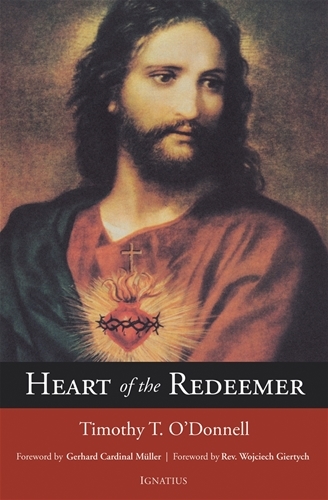
It would be accurate to say that by the middle of the twentieth century the devotion to the Sacred Heart of Jesus had universally triumphed throughout the Church. Everywhere in the world, churches, monasteries and congregations were to be found dedicated to the Sacred Heart. In virtually every Catholic church one would find a statue of our Lord revealing his Heart. Large numbers of the faithful gathered on every continent for First Friday devotions, the Holy Hour and other pious practices associated with the devotion. This triumphal procession, however, was not welcomed in all quarters and the devotion began to draw criticism from some Catholic theologians who began to question certain aspects of these devotional exercises. Some outside, and even within, the Church questioned the theological foundation of the devotion.
Pope Pius XII was well aware of the objections which some were making to the devotion. It is because of these objections that the Holy Father wrote his encyclical on devotion to the Sacred Heart of Jesus, and in it he exhorted the faithful to "a more earnest consideration of those principles which take their origin from Scripture and the teaching of the Fathers and theologians," which form the solid foundation for the worship of the Sacred Heart of Jesus. The Pope went on to call for and stress the importance of "a profound study of the primary and loftier nature of the devotion with the aid of the light of the divinely revealed truth" so that we may "rightly and fully appreciate its incomparable excellence and the inexhaustible abundance of its heavenly favors." The Holy Father ended his appeal by requesting a "devout medita- tion and contemplation" upon the benefits of the devotion.
After the publication of Haurietis Aquas, many books were written on the devotion. These works varied tremendously in size and quality. They included pious or devotional works, popular pamphlets, and mystical writings which described extraordinary supernatural experiences.
There is still a need for a systematic theological exposition and defense of the devotion which will lead to a deeper penetration and understanding of it, as was requested by Pius XII and subsequent pontiffs. It is my most earnest hope and prayer that this book will help in some way to answer the call of the Holy Father and will contribute to a greater understanding of our Lord's Heart, which is "so full of infinite majesty and compassion."
The encyclical and devotion both, unfortunately, seem to have been down-played or overshadowed, if you will, in the wake of the Second Vatican Council. Many today object to the devotion for a variety of reasons, some manifestly superficial and others quite serious. Despite the objections, there are presently strong signs of a widespread reawakening of interest in the devotion and the contributions which it can make toward the renewal of the Church.
Some have criticized the devotion for the language used in many of the prayers addressed to the Sacred Heart. Phrases such as "prostrate before thy altar" seem to many a bit archaic and not in keeping with our modern idiom. Often times prayers and the lyrics of hymns to the Sacred Heart are considered excessively sweet and sentimental. Artistic representations of the devotion are criticized for being too saccharine and effeminate.
None of these criticisms touch what is essential to the devotion as it has been taught by the Church. They deal with external aspects; and yet we must remember that man derives his knowledge through the senses, and therefore poor art and unsuitable language may form obstacles to a deeper understanding and love of the devotion. We shall discuss some of these problems in the final section of this study, where we deal with questions of renewal and adaptation.
The more serious objections which have been raised against the devotion cannot be brushed aside but must be dealt with clearly and honestly. Critical questioning is a good thing, since it may open both the mind and heart to a deeper reflection and understanding of this "priceless gift which our Savior has given to his Church." I have formulated here what I believe to be the four major objections which have been raised to the devotion to the Sacred Heart of Jesus.
1) The devotion to the Sacred Heart rests upon a weak doctrinal base and threatens to overemphasize the humanity of Christ. This position is espoused by theologians such as Karl Barth, who places the devotion on the same level as modern Protestant biographies of the historical Jesus that have abandoned belief in the reality of the Incarnation of the Word. In his book, Church Dogmatics, he characterizes both forms as attempts to "find an approach to Jesus Christ which circumvents his divinity," offering an "approach to a revelation which is generally understandable and possible in the form of human judgments and human experiences. In the Heart of Jesus cult... it is blatantly a matter of finding a generally illuminating access to Jesus Christ which evades the divinity of the Word. Therefore both Neo-Protestant faith in the religious hero Jesus and the Catholic devotion to the Heart of Jesus, are to be rejected as the deification of a creature." [1]
2) There is no scriptural reference to the devotion. This criticism is frequently heard from our separated brethren and even some Catholics, who demand proof of scriptural authenticity. This is especially important since the Second Vatican Council emphasized Sacred Scripture as the foundation of theology and spirituality.
3) The devotion sprang from a mere private revelation given to a cloistered nun in 17th century France. It is therefore a new devotion and is not sanctioned by Christian tradition.
4) The devotion may have been beneficial for a particular age and cultural outlook but it is no longer suited to modern times and has become obsolete.
Although some objections are of greater importance than others, all must be answered. If any of these objections should prove true, the validity and perennial value of the devotion would be seriously shaken, if not shattered. This work shall be divided into four sections in which we hope to achieve four goals.
First, we shall examine the dogmatic foundations for the devotion as found in Sacred Scripture and the Church's teachings concerning Christ as it took shape in the great Christological controversies in the 4th and 5th centuries. This is absolutely essential to demonstrating the perennial validity and value of the devotion.
Second, we shall then proceed to trace the historical development of the devotion which culminated in the great revelation given to St. Margaret Mary Alacoque. Here we shall glimpse the Holy Spirit at work in the dynamic living tradition of the Church. It will be a thought-provoking study which will reveal the theological richness of the devotion, its evolution and the multiple forms which it has taken throughout two Christian millennia. This investigation will probe into the patristic roots of the devotion, its flowering in the era of medieval mysticism, and developments up to the present day.
Third, we shall then examine the contemporary importance of the devotion in the life of the Church in the light of magisterial teaching. In the 19th and 20th century there is a large amount of papal teaching on the devotion. The See of Peter has given the devotion a unique position in the Church. This wealth of papal magisterial teaching will have much to say regarding the timeliness and timeless value of the devotion.
Last, we shall discuss questions of renewal and adaptation of the devotion according to the guidelines of Vatican II.
It was only after a great deal of serious reflection that I decided to write this book which is an outgrowth of studies begun at the Angelicum in Rome in 1978.1 chose to write on the loving Heart of our Lord because I believe the devotion to be of vital importance today. I offer here to the reader, for his prayerful reflection, three quotations from three popes of the 20th century concerning the importance of devotion to the Sacred Heart in our age:
[Devotion to the Heart of Jesus] is the extraordinary remedy for the extraordinary needs of our times. (Pius XI, Caritate Christi Compulsi, May 3, 1932)
Devotion to the Most Sacred Heart of Jesus is so important that it may be considered, so far as practice is concerned, the perfect profession of the Christian religion .... It is no ordinary form of piety which anyone at his own whim may treat as of little consequence or set aside as inferior to others. (Pius XII, Haurietis Aquas, May 15, 1956)
The cult rendered to the Sacred Heart is the most efficacious means to contribute to that spiritual and moral renewal of the world called for by the Second Vatican Council. (Paul VI, Address to the Thirty-First General Congregation of the Society of Jesus, Nov. 17, 1966)
These three statements are well worth pondering for all those who would sentire cum Ecclesia.
The veneration of our Lord's Heart, insofar as it honors Christ as the source and substance of our redemption, is no ordinary devotion. It is truly latreutical--a devotion which is rendered to God alone. For the Heart of Christ occupies a central position, as the focal point through which everything passes to the ultimate center in the Father--per Christum ad Patrem. It is a devotion of tremendous theological richness, containing a complete synthesis of faith, or, as Pius XI put it "summa totius religionis." The devotion is at once theocentric and anthropocentric, Trinitarian and Christocentric; it emphasizes love of God and calls eloquently to the fraternal apostolate. It may also lead to that sound eucharistic piety so greatly desired by the Second Vatican Council. This is especially true since the Eucharist, as Pope Paul VI observed, is the "outstanding gift" of the Sacred Heart of Jesus.
I firmly believe that the spirituality fostered by this devotion can best meet the spiritual needs of our age. It is a practical form of spirituality which emphasizesfamlliaritas cum Christo and therefore is marvelously suited to aid priest, religious and laity alike in their journey of growth in holiness. If practiced in the family, devotion to the Heart of Jesus may greatly help to counter those pagan elements of culture which all too often work their way into the sanctuary of the home.
The devotion should be made available to all. Unfortunately, the widespread ignorance throughout the Church of the devotion's rich theological foundations has greatly hindered its full appreciation and practice. It is only by returning to these sources as found in Sacred Scripture, tradition and the teaching of the Church's magisterium that we can hope to renew the devotion and thereby allow it to play a central role in the larger effort to renew the Church.
Our Lord, in his apparition to St. Margaret Mary Alacoque, communicated to her that the revelation of his Heart was "a final effort" to enkindle the fire of love in a world in which "charity had grown cold." Such is the age in which we live. William Butler Yeats foresaw the crisis of our era in a prophetic poem written at the turn of the century:
Things fall apart; the centre cannot hold;
Mere anarchy is loosed upon the world,
The blood-dimmed tide is loosed and everywhere
The ceremony of innocence is drowned;
The best lack all conviction, while the worst
Are full of passionate intensity. [3]
Coldness and hatred can be melted and overcome only by the fire of love. Certainly, in an age which is characterized by an increasingly hostile secularization, a spirituality which centers on love and aims at setting the world on fire is precisely what is needed to instaurare omnia in Christo.
I have come to cast fire upon the earth,
and what will I but that it be kindled? (Lk 12:49)
Timothy T O'Donnell, S.T.D.
October 16, 1989
Feast of St. Margaret Mary
ENDNOTES:
[1] Pius XII, Encyclical Letter on Devotion to the Sacred Heart, Haurietis Aquas, May 15, 1956 (hereafter cited as HA).
[2] Karl Barth, Church Dogmatics, vol I, pt. 2 (Edinburgh: T & T Clark, 1970) pp. 137-38.
[3] From William Butler Yeats, "The Second Coming", in Collected Poems, new ed., Macmillan Collector's Library (London: Pan Macmillan, 2016), p. 260.
October 27, 2017
New: "The Case for Catholicism: Answers to Classic and Contemporary Protestant Objections"
Now available from Ignatius Press:
The Case for Catholicism: Answers to Classic and Contemporary Protestant Objections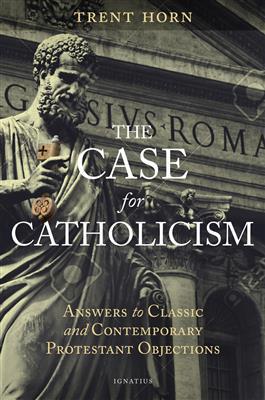
by Trent Horn
This is the most up-to-date, comprehensive, and thorough defense of the Catholic Church against Protestant objections in print. This book is especially relevant as the 500th anniversary of the Protestant Reformation draws near and discussion of the arguments made against the Church during that time in history receive renewed interest.
The Case for Catholicism answers arguments put forward by early Reformers like Luther and Calvin as well as contemporary defenders of Protestantism like Norm Geisler and R.C. Sproul. It provides a meticulous defense of the biblical and historical nature of Catholic doctrines from Scripture and church history. Finally, in both answering Protestant objections to Catholicism and in providing evidence for the Faith, The Case for Catholicism cites modern Protestant scholars who question Reformation assumptions and show how evidence from Scripture and church history support aspects of Catholic theology.
This book is divided into four sections, with each answering a key question Christians have asked about the nature of their faith. Those key questions are:
What is my authority?
What is the Church?
How am I saved?
Who belongs to the body of Christ?
The Case for Catholicism will become a reliable, resource for any Catholic who desires a well-researched, readable, and persuasive answer to Protestant arguments made against the Catholic faith.
Trent Horn, a convert to Catholicism, has a BA in history from Arizona State University, and an MA in theology from Franciscan University of Steubenville. He is a regular guest on the radio program Catholic Answers Live, and a lecturer nationwide on the Catholic faith. He is the author and the author of Answering Atheism, Persuasive Pro-life, and Hard Sayings.
October 19, 2017
New: "Humility Rules: Saint Benedict's Twelve-Step Guide to Genuine Self-Esteem" by J. Augustine Wetta, O.S.B.
Now available from Ignatius Press:
Humility Rules: Saint Benedict's Twelve-Step Guide to Genuine Self-Esteem
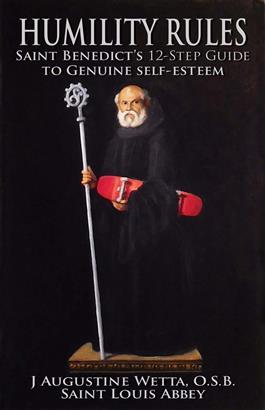
by J. Augustine Wetta, O.S.B.
Saint Benedict's fifth-century guide to humility offers the antidote to the epidemic of stress and depression overwhelming modern young adults. But the language of The Rule by Saint Benedict is medieval, and its most passionate advocates are cloistered monks and nuns. How then does this ancient wisdom translate into advice for ordinary people?
With candor, humor, and a unique approach to classical art, Father Augustine, a high school teacher and coach, breaks down Saint Benedict's method into twelve pithy steps for finding inner peace in a way that can be applied to anyone's life.
Drawing upon his own life experiences, both before and after becoming a Benedictine monk, the author explains every step, illustrating each chapter with color reproductions of sacred art that he has embellished with comic flourishes. The winsome combination is sure to keep readers from taking themselves too seriously—which is already a first step on the path to humility.
J. Augustine Wetta, O.S.B., is a monk of Saint Louis Abbey. He serves as the Director of Chaplaincy at the Saint Louis Priory School, where he teaches English and Theology, and coaches rugby. During his spare time, Father Augustine supervises the juggling team, cultivates carnivorous plants, raises carpenter ants, and surfs.
"This book could not be more perfect. The author shares with C.S.Lewis his rare talent of taking profound thought and turning it into the language ordinary people understand. Many have tried to do as Lewis did, but of those who have achieved it, Fr Augustine is the most successful."
— Walter Hooper, Literary Adviser to the Estate of C.S.Lewis
"My apostolate has worked with many thousands of teens and young adults. I know how real self-esteem challenges are for them. Fr. Augustine's book is a good antidote to this. It is full of practical, relevant advice based on a rule that's been road-tested for 1,500 years. I highly recommend this refreshing and engaging read!"
— Curtis A. Martin, Founder and CEO of FOCUS
"With warmth, wit, and honesty, Humility Rules presents a fascinating window into the way of the monk, showing how St. Benedict's wisdom enables us to find freedom in Christ wherever we make our home. The depth of this book's spirituality makes it an engaging introduction to the Benedictine way for readers of any age."
— Dawn Eden, Author, Remembering God's Mercy
"Secular culture loves things monastic like monk-made bread and calming meditation. But the heart of the Benedictine life is humility. This deceptively light hearted book offers a series of enlightening contrasts to make humility an attractive proposition today. This is an excellent introduction to truthful living for a culture steeped in illusions."
— Dom Christopher Jamison, Monk, Writer, Broadcaster
"Humility rules. It really does! This fun and insightful look at the Rule of Saint Benedict brings ageless wisdom to everyday life. Do yourself a favor and pick up this book! Then ask God to help you live it. For in His kingdom, the way down is truly the only way up."
— Joanna Weaver, best-selling author of Having a Mary Heart in a Martha World
October 17, 2017
New: "Leonie Martin: A Difficult Life" by Marie Baudouin-Croix
Now available from Ignatius Press:
Leonie Martin: A Difficult Life
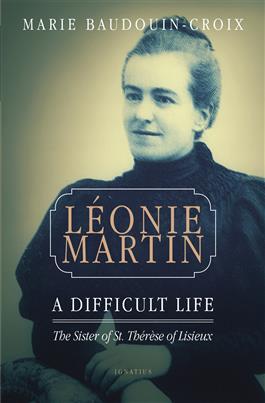
by Marie Baudouin-Croix
A sister of Saint Thérèse of Lisieux, Léonie Martin (1863-1941) was one of the five daughters of Zélie and Louis Martin, who were canonized by Pope Francis. She was the least gifted of the five Martin sisters, an emotionally disturbed child who suffered much and caused much anguish in her family.
Marie Baudouin-Croix has carefully researched Léonie's life, including her mother's voluminous correspondence about her family life. In letters to her daughters, sister, brother, and sister-in-law, Zélie confided the challenges she faced in raising L‚onie. Yet Léonie was the first one in the Martin family to understand and to follow Thérèse's Little Way.
After three valiant but unsuccessful attempts to enter consecrated religious life, Léonie was finally accepted by the Visitation Order in Caen. As a Visitation nun she succeeded in conquering a difficult temperament and other personal challenges, so that by the time of her death at seventy-eight years old she was regarded by many as a saint. Her convent at Caen has been inundated with letters testifying to her posthumous intercessory aid.
How did this troubled child turn into the nun remembered by many as so kind, serene, and happy that they could not believe she had such a difficult childhood? She discovered God within herself, in her weakness and suffering, and she became a great disciple of Thérèse's "way of confidence and love". Léonie practiced the Little Way so deeply that in 2015 the cause for her sainthood was officially opened by the Church.
Marie Baudouin-Croix is a popular French poet and author.
"The 'lame duck', as Léonie was aptly nicknamed, grew in tremendous virtue, overcoming failures and disabilities, abandoning herself to God's mercy. A fascinating read!"
—Donna-Marie Cooper O'Boyle, EWTN TV Host; Author, The Kiss of Jesus
"An essential read for anyone with a devotion to the Little Flower or with an interest in the science of the saints. It shows that problematic behavior in children can happen in any family, and that our imperfections can be very much a part of our journey to sanctity. A deeply moving book."
—Sally Read, Author, Night's Bright Darkness: A Modern Conversion Story
"For those seeking sanctity amidst life's struggles, Léonie Martin is a gift that helps us to apply the Little Way when the way we must travel is less than perfect. In Léonie's story we discover the truth that each of us, regardless of our station in life, is called to strive for sainthood."
— Lisa Hendey, Founder of CatholicMom.com
"It is reassuring to learn that even a family with three canonized saints was not without its painful human limitations. The woman once known as 'poor Léonie ' played her own essential role in the sanctification of the entire Martin Family."
— Fr. Sean Davidson, Author, Saint Mary Magdalene: Prophetess of Eucharistic Love
October 9, 2017
New: "Conversion: Spiritual Insights Into an Essential Encounter with God" by Fr Donald Haggerty
Now available from Ignatius Press:
Conversion: Spiritual Insights Into an Essential Encounter with God
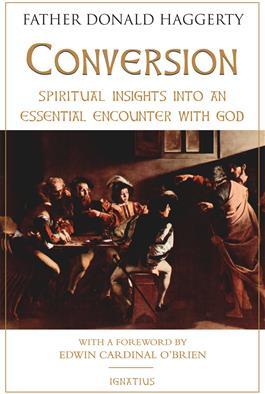
by Fr Donald Haggerty
Contemporary spiritual writer Fr. Donald Haggerty offers penetrating observations of the phenomenon of Christian conversion. Arranged as a collection of concise, meditative reflections, this book discusses the essential elements of a soul's return to God, including the repercussions of sin, the proper understanding of mercy, and the importance of a more radical response to God's will.
Fr. Haggerty also explores the fruits of conversion that make the difference between a mediocre relationship with God and a truly holy life. He identifies these special graces as love for the poor, simplicity of lifestyle, and devotion to the Eucharist.
The author's treatment of a "second conversion" is a unique and thought-provoking contribution to his subject. The ever renewed invitation to embrace a deeper passion for God is the thematic undercurrent of this inspiring work.
Fr. Donald Haggerty a priest of the Archdiocese of New York, has been a Professor of Moral Theology at St. Joseph's Seminary in New York and Mount St. Mary's Seminary in Maryland. He has a long association as a spiritual director for Mother Teresa's Missionaries of Charity. He is the author of the books Contemplative Hunger and Contemplative Provocations.
"Conversion of heart sums up the compelling invitation of Jesus. Let Fr. Donald Haggerty, an accomplished spiritual theologian, guide us."
—Cardinal Timothy Dolan, Archbishop of New York
"Fr. Haggerty uses a clear and direct style to make the point that conversion is the daily heartfelt response of a disciple to the Master."
—Fr. George Rutler, Author, He Spoke to Us
"This is that rarest book, one that needs no praise because its spiritual truth and radical love are evident on every page."
—Matthew Levering, Ph.D., Professor of Theology, Mundelein Seminary
"Fr. Haggerty invites readers to walk a variety of paths to true conversion - a journey not to be missed with a guide of rare understanding and insight."
—Raymond Arroyo, New York Times Best-selling author; EWTN News Anchor
"Fr. Haggerty suggests ways in which we can keep aflame and intensify the passion for God that marked our first fervor."
—Sr. Sara Butler, M.S.B.T., Blessed Trinity Missionary Cenacle
"Conversion is a life-long process and a daily gift. Fr. Haggerty's reflections on conversion to Christ invite all of us to follow after the Lord and to receive, with courage, the grace of his mercy and love."
—Most Rev. James Conley, Bishop of Lincoln, NE
"No task presses more urgently upon the Church today than preaching the call to conversion, and no greater tragedy exists for the human creature than to miss being converted."
—Fr. Romanus Cessario, O.P., Professor of Theology, St. John's Seminary
"Catholic poet Siegfried Sassoon described conversion as 'being in love with life transformed-life breathed afresh'. Fr. Haggerty's profound and beautiful book conveys this wonder and inspires in us a desire for ever deeper personal conversion."
—Fr. Peter John Cameron, O.P., Editor, Magnificat
October 4, 2017
New: "1 & 2 Kings: Ignatius Catholic Study Bible"
Now available from Ignatius Press:
1 & 2 Kings: Ignatius Catholic Study Bible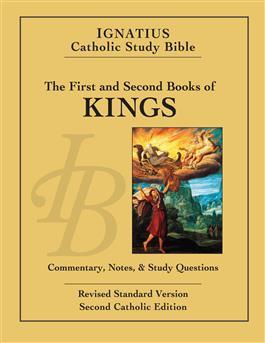
by Scott Hahn and Curtis Mitch
This volume in the popular Ignatius Catholic Study Bible series leads readers through a penetrating study of the First and Second Books of Kings using the biblical text itself and the Church's own guidelines for understanding the Bible.
Ample notes accompany each page, providing fresh insights by renowned Bible teachers Scott Hahn and Curtis Mitch as well as time-tested interpretations from the Fathers of the Church. These helpful study notes provide rich historical, cultural, geographical, and theological information pertinent to the Old Testament book—information that bridges the distance between the biblical world and our own.
The Ignatius Catholic Study Bible also includes Topical Essays, Word Studies, and Charts. The Topical Essays explore the major themes of 1 & 2 Kings, often relating them to the teachings of the Church. The Word Studies explain the background of important biblical terms, while the Charts summarize crucial biblical information "at a glance".
For more information on the series, click here.
"With copious historical and theological notes, incisive commentary and tools for study, the Ignatius Catholic Study Bible is outstanding for private devotion, personal study and Bible study groups. It is excellent for evangelization and apologetics as well!"
— Stephen Ray, Host ,The Footprints of God series
"The Ignatius Study Bible is a triumph of both piety and scholarship, in the best Catholic tradition: simply the most useful succinct commentary that any Christian or other interested person could hope for."
— Erasmo Leiva, Author, Fire of Mercy, Heart of the Word
September 25, 2017
New: "Report from Calabria: A Season with the Carthusian Monks"
Now available from Ignatius Press:
Report from Calabria: A Season with the Carthusian Monks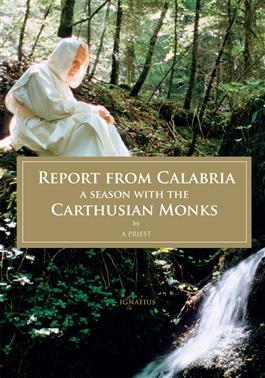
by A Priest
Devoted to silence, prayer, and austere simplicity, the Carthusian monks guard their solitude jealously and rarely allow visitors to live with them. The author of this book, however, was privileged to spend four months with the Carthusian community in Calabria, Italy, the resting place of the founder of their order, Saint Bruno. The American priest followed the daily regimen of the monks and wrote to family and friends in order to share his experiences and insights. His engaging and informative letters are presented in this book along with professional four-color photographs provided by the monastery.
Report from Calabria describes and illustrates the distinctive features of the Carthusian way of life as they were encountered by the author. Historical background and excerpts from the writings of Saint Bruno round out the priest's experiences. The contemplative vocation—bracing and yet deeply human—comes alive in this vivid account of very little happening yet a lot going on.
About the author: The American priest who lived with the Carthusian monks in Calabria, Italy, for four months and wrote this book about his experiences and insights wishes to remain anonymous.
"I am very moved to be able to read about the Carthusian monks in Calabria. It is heartening to share even a day with those holy men. They make me so grateful for the vocation I was given, but their lives are even more meaningful for those living in the midst of modern pain. To see them in the pages of this book eating, working, and praying in silence and solitude is just amazing. They are basically attempting to find God within the human conditions most human. Through them we see so clearly that we find God by accepting our lives as gifts from him and by appreciating our being born, in flesh and blood, in profound likeness to God himself, as fully revealed by the Second Person of the Trinity, who became man. The Report from Calabria could very well be a report from God himself telling us what we cry and anguish to know."
— Mother Dolores Hart, O.S.B, Author of The Ear of the Heart
"Report from Calabria is a beautiful book. The author's short sketches capture the silent rhythms of worship and contemplation at the heart of Carthusian life and the humanity of hidden lives in the cloister. The photographs show a world that few people get to see. Most importantly, this book points to the profundity of daring to enter a dialogue of silence with the heart of the Lord. Each one of us invited to know the Lord in silence. Report from Calabria is a guidebook to a beautiful place, and to the beauty of interior and silent communion with the Lord."
— Most Rev. James D. Conley, S.T.L., Bishop of Lincoln, Nebraska
"This book is a gem. The Carthusians have long captivated the imagination of the Catholic world: by their austerity, their silence, their seclusion, and their mysteriousness. Although they will never say so themselves, they've lived up to their motto: 'Never reformed because never deformed.' This book is an honest and stunningly beautiful view of the inside life of a Charterhouse. Through these pages you can feel the cold of the cell, smell the pasta in the midday meal, and sense the profound reverence of the Carthusian liturgy. This book will make you want to pray."
— Most Rev. Michael C. Barber, S.J., Bishop of Oakland
"The Carthusian life, typically so unknown and hidden, has found another privileged account. The anonymous priest-author enjoyed four months of full participation in Carthusian life in Calabria. The letters written during his monastic stay and collected here display an observant eye and sensitive insights for both external detail and for the rich depth of dedicated silence, solitude, and prayer that marks the Carthusian life. Anyone moved some years back by the extraordinary film Into the Great Silence will find in this book another fascinating appreciation for the daily self-giving of these hidden monks who live all for God."
— Fr. Donald Haggerty, Author, Contemplative Provocationsand The Contemplative Hunger



[image error]
September 21, 2017
New: "Galileo Revisited: The Galileo Affair in Context" by Dom Paschal Scotti
Now available from Ignatius Press:
Galileo Revisited: The Galileo Affair in Context
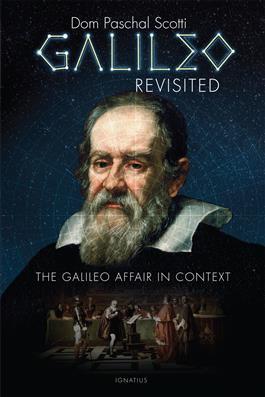
by Dom Paschal Scotti
No other work on Galileo Galilei has brought together such a complete description of the historical context in its political, cultural, philosophical, religious, scientific, and personal aspects as this volume has done. In addition to covering the whole of Galileo's life, it focuses on those things that are most pertinent to the Galileo Affair, which culminated in his condemnation by the Inquisition in 1633.
It also includes an extensive discussion of the relationship between religion and science in general, and of the relationship between Christianity and science in particular, without which a true understanding of the affair is much weakened. This discussion of the relationship of Christianity with science-a long, generally positive relationship-is most timely since the case of Galileo is, as many historians and Pope Benedict XVI have stated, the beginning of the alienation of the Church from much of the intellectual culture of our present age. The "warfare between science and religion" is an old myth that should finally be retired, but for many it is still axiomatic.
This work shows the significance of astrology in the history of society and the Church (Galileo was a master astrologer), and the importance of the internal tensions and factions within the Roman Curia in the seventeenth century. It also tells of the profound battles among Church leadership over the direction of the Church in a time of uncertainty and intellectual and cultural ferment. The Galileo Affair is not just of its time and place, and it is not just about Galileo, but it touches upon that perennial issue of how the Church deals with issues of adaptation and change.
Fr. Paschal Scotti, a monk at Portsmouth Abbey in Rhode Island, was ordained a priest in 1989 and teaches at his monastery's prep school, Portsmouth Abbey School, in the History and Humanities departments. He has a Licentiate in Canon Law (J.C.L) from Catholic University of America. Besides various journal and encyclopedia articles, he has a written a study of the Edwardian English Catholic editor, Wilfrid Ward.
"The Galileo case is often misunderstood as the simple opposition of modern science to blind faith. This valuable volume not only puts that myth to rest by presenting what were the real scientific, philosophical, and theological questions at stake. It's comprehensive in explaining the history, culture, conflicts, and personalities involved in this crucial episode in Western and Christian civilization."
— Robert Royal, Author, A Deeper Vision: The Catholic Intellectual Tradition in the Twentieth Century
"This exquisite history of a defining moment at the birth of modernity resists the temptation to idealize or villainize, treating both Galileo and his opponents as the flesh-and-blood creatures they actually were. The Galileo Affair is thus revealed to be not so much the clash of ideas or ideals we are so often told it was, as the clash of limited and imperfect people. Of the many versions of this story that I've encountered, this is the wisest and most balanced."
— Michael Augros, Ph.D., Author, Who Designed the Designer? A Rediscovered Path to God's Existence
"Dom Scotti has mastered all of the historical details of the great saga of Galileo and the Church, and he does not spare any of the players in his critical but fair-minded and thoughtful assessment of how the tragic confrontation unfolded and might have been avoided."
—John Farrell, Author, The Day without Yesterday: Lemaître, Einstein and the Birth of Modern Cosmology
"There is nothing like the facts to squelch a juicy rumor or a sensational story - especially one whose contour has been carefully crafted to embarrass the Church or keep her off balance. This book brings to bear the many new discoveries that have recently been made in the Galileo Affair. An open-minded reader will have abundant evidence for debunking the notion that the Church is against science."
— Rev. Joseph Koterski, S.J., Department of Philosophy, Fordham University
"Many people today think of Galileo in simplistic, black-and-white terms, as either a great and heroic scientist or a tragic, arrogant figure. As Dom Scotti demonstrates in this richly researched and often surprising work, the truth is both far more complex and far more interesting."
— Carl Olson, Editor, Catholic World Report; Author, Did Jesus Really Rise from the Dead?
"The Galileo Affair was a clash of ideas, but it was also a complex human drama that unfolded in extremely tense and turbulent times. Geopolitical struggles, Reformation and Counter Reformation, personal ambition, zeal for truth, scientific rivalries, gossip and scandal, status and celebrity, and even an outbreak of plague were all parts of the story. Dom Scotti's profoundly learned, wonderfully readable, and richly detailed book brings that vibrant world to life."
— Stephen Barr, Ph.D., Department of Physics, University of Delaware
"The image of Galileo kneeling before the Inquisition, forced to recant his views, is exaggerated in the modern mind. But Dom Scotti paints the truthful setting of Galileo's time, not a mere recounting of facts, but a journey into the Medici family, the Papal States of the 1600s, Galileo's desire for clarity, his tastes in the arts, the multifaceted trial, and his conflicts to the last breath. For those excited about how Catholics can lead scientific progress, the visit with Galileo, the man, is a requisite pilgrimage."
— Stacy Trasancos, Author, Particles of Faith: A Catholic Guide to Navigating Science
The Gospel of St. Matthew: The Unity of the Life of Jesus
The Gospel of St. Matthew: The Unity of the Life of Jesus | Erasmo Leiva-Merikakis | From the Introduction to Fire of Mercy, Heart of the Word (Vol. II): Meditations on the Gospel According to St. Matthew
The Gospel according to St. Matthew is not a text simply stringing together haphazard events and occasions that present Jesus teaching valuable and true things. Beyond this, the Gospel text portrays the unity of Jesus' whole life. Very likely the earliest nucleus of the Gospel text is what is now its conclusion, that is, the narrative of Jesus' Passion, death, and Resurrection, which narrative no doubt constituted 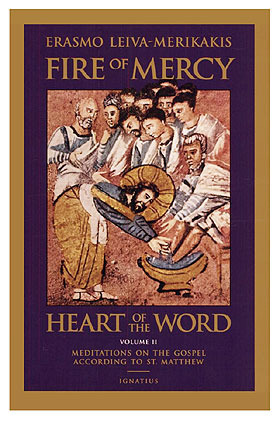 the heart and substance of the primitive oral kerygma, or "proclamation" of the faith by the apostles and their successors. Everything else in the Gospel text came later, composed to show how everything in Jesus' life and teaching eventually had to lead to his atoning death out of love.
the heart and substance of the primitive oral kerygma, or "proclamation" of the faith by the apostles and their successors. Everything else in the Gospel text came later, composed to show how everything in Jesus' life and teaching eventually had to lead to his atoning death out of love.
In Matthew's Gospel we see how, against all obstacles and opposition, Jesus moves with a sovereign sweep from the promises of God in the Old Testament, fulfilling them in his Incarnation as Messiah, to his identity as a man who does divine things and speaks divine words (parables, miracles, encounters, discourses), to the culmination of the story in his Passion, death, and Resurrection, and, finally, to the conclusion of the story in Jesus commissioning the apostles to do what they have seen him do and teach what they have seen him teach. In the end, they are to become what they have seen him be.
Thus, the main message of Matthew's Gospel is that we are not saved by detached "doctrines" or "truths", but by the whole life of this man, Jesus of Nazareth, in all its fullness and unity. All Christian theology is but a systematic reflection on this life, on everything it reveals about God and us and on everything this revelation implies for our own future life and behavior.
In the Gospel, Jesus Christ the person and his action in our lives have absolute primacy over anyone's teaching about Jesus Christ.
A comparison of the very beginning of the text with its very end may serve to detail the overarching unity of Matthew's Gospel and its fundamental message. At 1:23 Matthew inserts a quotation from the prophecy of Isaiah (7:14): "Behold, a virgin shall conceive and bear a son, and his name shall be called Emmanuel (a name which means 'God with us')." If we then turn to the last sentence in Matthew, we read: "Lo, I am with you always, to the close of the age" (28:20). Now, these are words that only an incarnate God can speak with truth, and we suddenly realize that everything between these two quotations-the promise and its everlasting fulfillment--is meant by Matthew to represent an unfolding of what it means for "God to be with us" in the person of Jesus. Between these two passages there are five major sections of the Gospel, perhaps symbolic of the five books of the Pentateuch that constitute the Torah. Matthew's Gospel, thus, through its symbolic structure, is apparently claiming to contain God's definitive words and deeds, which fulfill and surpass the Torah but only through the presence and action of Jesus, the living Word made flesh: "It was said to you .... But I say to you" (cf. Mt 5:21-22, 27-28, 31-34, 38-39, 43-44).
Many other such layers of deliberate structuring may be discovered in Matthew's Gospel. It is possible to describe its total design as follows: The text consists of a body in five major segments, preceded by an introduction (Jesus' genealogy and infancy, 1:1-2:23) and culminating in the heart of the Gospel-the Passion, death, and Resurrection narrative (26:1-28:20). Each of the five central sections (3:1-7:29; 8:1-10:42; 11:1-13:52 13:53-18:35; and 19:1-25:46) may in turn be subdivided into a "narrative" and a "discourse" component (see tabulation on page 329), and it is possible to detect a correspondence between the events of the narrative and the theme of the discourse that follows it. And each of these five sections concludes with a formula such as "And when Jesus finished these sayings" (7:28).
There may well be an important theological point being made here through this structural arrangement, namely, that the Gospel is first and foremost about the interactive encounter between Jesus and humanity, portrayed in a narrative. All subsequent words of teaching and instruction, even those coming from Jesus himself, are but a persuasive reflection that seeks to delve more deeply into that primordial encounter in order to help the reader make it his own.
For instance, in the fourth central section (13:53-17:27) we read in the narrative portion about the feeding of the five thousand, then of the four thousand, about Peter's confession and his commission, and about the Transfiguration. Clearly, these are all events that portray different aspects of "church"--how Jesus fashions a community of believers out of the random scattering of humanity. What then follows in the discourse portion of section four is a formal exhortation sometimes called the "Sermon on the Church" (18:1-35), which deals with the qualifications for membership in the Kingdom, fraternal relations of either scandal or edification, and above all forgiveness.
Such a structural feature as we here describe--this thematic correspondence between "narrative" and "discourse" in each section--reminds us from a fresh angle that the Gospel is never mere philosophizing but always a portrayal of the Word incarnate, the eternal Son and Wisdom of the Father in whom event and word, prayer and deed, are one. Christ Jesus is no mere brilliant teacher and itinerant prophet; he is the divine Son made flesh, the person who, all at once, is cosmic Event, Word of truth, and Deed of salvation, and this dynamic richness of identity in Jesus is what the Gospel manifests at each step, both in its individual parts and in its total structure.
If, in our imagination, we put the Gospel text back into its original context of oral transmission, before it evolved into the form of a written text, we will begin to see its character as the record of an encounter between persons. The Gospel is not primarily words written in a book: this is only the final stage of a process that began with Jesus' real historical presence and interaction with people in the world. When the Gospel is proclaimed in the praying assembly of believers, we participate in the living memory of the Church from the beginning, the Church that was so careful to communicate in a living way and hand down to each generation of Christians the treasure of her experience of the Lord's presence in her midst.
The Gospel is a living tradition, something alive in our hearts and memory insofar as we are Christians, something continually shaping and nourishing our faith, thoughts, and deeds. This is why the Gospel is never more itself than when it is publicly proclaimed, heard, and commented upon during the Liturgy of the Word.
For instance, when we hear the Gospel of the Beatitudes (Mt 5:1-12) proclaimed on a given Sunday, we sense that that is the original setting in which the Gospel was meant to be read. Such a text communicates to us, not a historical sketch of someone who lived in the past and is interesting for a number of good reasons. Rather, such a text evokes a presence, not only by stimulating the power of imagination and memory, but by the power of the sacramental action of the Church in the Eucharist. The words of Matthew's Gospel are inseparable from the Eucharistic Sacrifice, because in his Gospel Matthew is proclaiming an event and a person that want to become a saving reality here and now in my life and in the life of all mankind. [3]
We must conclude, then, that the genre of the Gospel is not that of pure "history"; but neither is it that of myth, fairy tale, or legend. In fact, evangelion constitutes a genre all its own, a surprising novelty in the literature of the ancient world. Matthew does not seek to be "objective" in a scientific or legal sense. He is writing as one whose life has been drastically changed by the encounter with Jesus of Nazareth. Hence, he is proposing to his listeners an objective reality of history, but offered as kerygma, that is, as a proclamation that bears personal witness to the radical difference that reality has already made in his life. Whether this encounter with Jesus of Nazareth occurs literally in the flesh or spiritually through the faith of the Church is not as important as the fact that it does take place.
We, living twenty-one centuries later, are at no disadvantage! We should not want to answer questions that the evangelists themselves did not raise: the color of Jesus' eyes and hair, his height, and so on. Nor is it essential to ask: Did this or that occur precisely in the way described in the text? The historical nucleus obviously at the very center of the Gospel narrative is inseparable, in keeping with the genre of the evangelion or "good news", from the response of faith with which Matthew presents it so as to persuade his listeners to enter into the same experience of encounter with Jesus. This encounter will hopefully result in the transformation of their lives. When we approach the text of Matthew we must come to share in his own faith if we are fully to understand what he has written.
ENDNOTES:
[3] The unity of word, sacrament, and Christian life as constituting the total Mystery of Christ has seldom been explored so profoundly as in Jean Corbon, The Wellspring of Worship (Mahwah, NJ.: Paulist Press, 1988; new edition by Ignatius Press, 2005).
September 1, 2017
New: "Kidnapped by the Vatican? The Unpublished Memoirs of Edgardo Mortara" by Vittori Messori
Now available from Ignatius Press:
Kidnapped by the Vatican? The Unpublished Memoirs of Edgardo Mortara
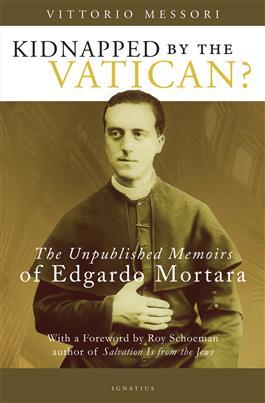
by Vittori Messori
In 1888 Fr. Edgardo Mortara wrote his autobiography so that the world would understand he had not been kidnapped by the Vatican. Here, along with a thorough introduction by Vittorio Messori, his story is published for the first time in English.
As an infant, Mortara was on the point of death and secretly baptized by a Catholic servant employed by his family. He recovered his health, and in the Papal States where his family lived, the law required that he, like other baptized children, receive a Christian education. After several failed attempts to persuade his parents to enroll him in a local Catholic school, in 1858 Pope Pius IX had the boy taken from his family in Bologna and sent to a Catholic boarding school in Rome. There the child grew in Faith and eventually responded to the calling to become a Catholic priest.
The Mortara Case reverberated around the world. Journalists, politicians, and Jewish leaders tried to pressure Pius IX to reverse his decision. The pope's refusal to do so was used as one of the reasons to dissolve the Papal States in 1870. Currently the case is being used as an argument against the canonization of Pius IX, whom John Paul II beatified in 2000.
Vittorio Messori is an acclaimed Italian journalist and author. Among his most influential books is The Ratzinger Report, with Cardinal Joseph Ratzinger who became Pope Benedict XVI. He also conducted the first book-length interview with Pope John Paul II, published under the pope's authorship and the title Crossing the Threshold of Hope.
"In this account . . . Edgardo pours the soothing balm of love and truth over the turbulent waters of polemics, showing more eloquently than any argument could where the rights and wrongs of the case truly lie."
—Roy Schoeman, from the Foreword; Author, Salvation Is from the Jews
"The Mortara Case is something few people know much about. It involves sacramental issues, the relation of Jews and Christians, kidnapping, and the last of the Papal States. Ignatius Press is well advised to bring this book originally published in Italian to our attention."
—James V. Schall, S.J., Professor Emeritus, Georgetown University
"The Mortara Case has returned as an issue. This book explains the historical context and then lets Fr. Mortara himself speak through his memoirs. It is well worth reading."
— Fr. Mitch Pacwa, S.J., Senior Fellow, St. Paul Center for Biblical Theology
"Ambiguities about the Mortara Case will remain, but the measured commentary of Vittorio Messori and the unprecedented publication of Fr. Mortara's own diaries put the whole emotional dilemma into a clearer light."
—Fr. George Rutler, Pastor of St. Michael's Church, New York; Author, He Spoke to Us: Discerning God in Events and People
Carl E. Olson's Blog
- Carl E. Olson's profile
- 20 followers



